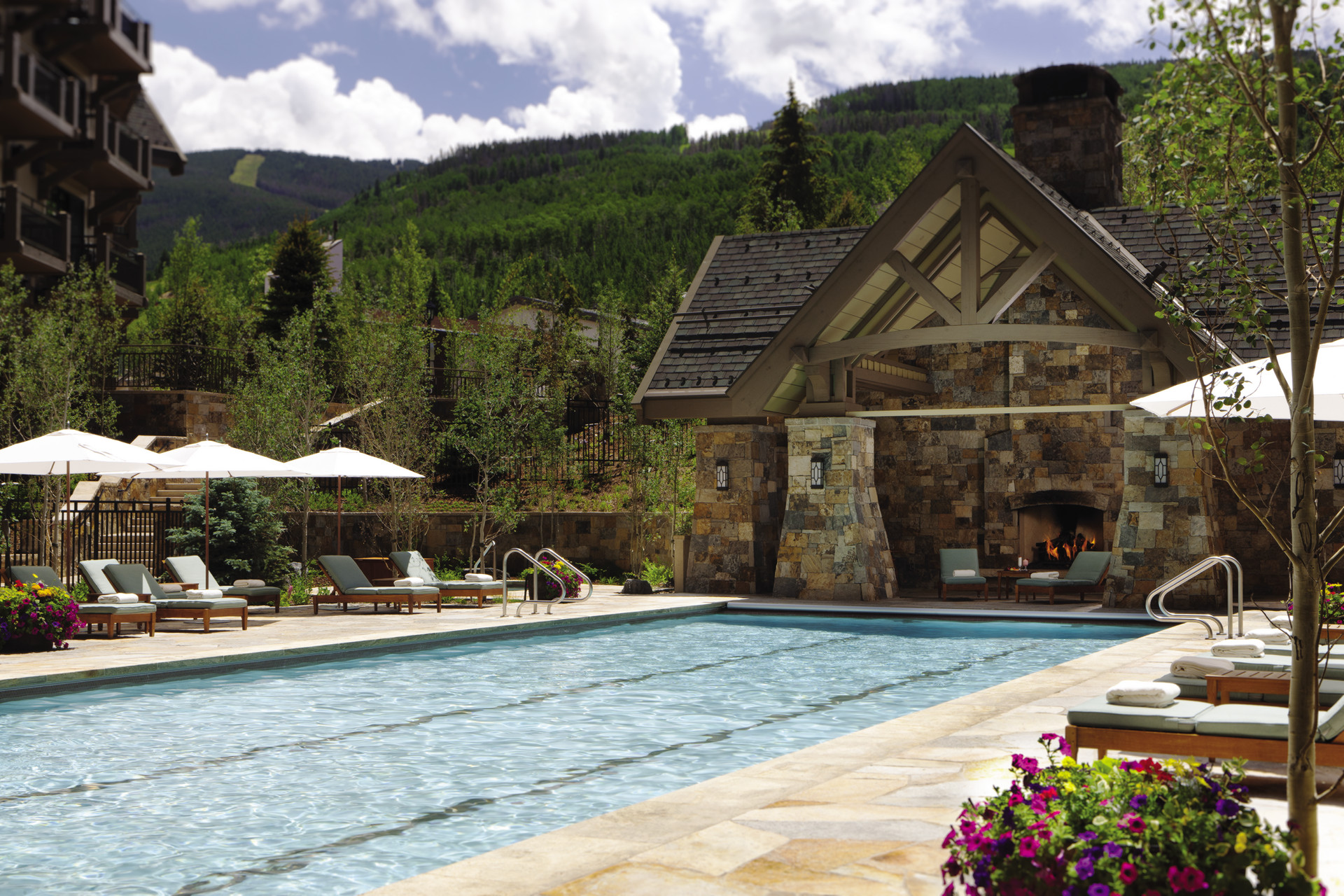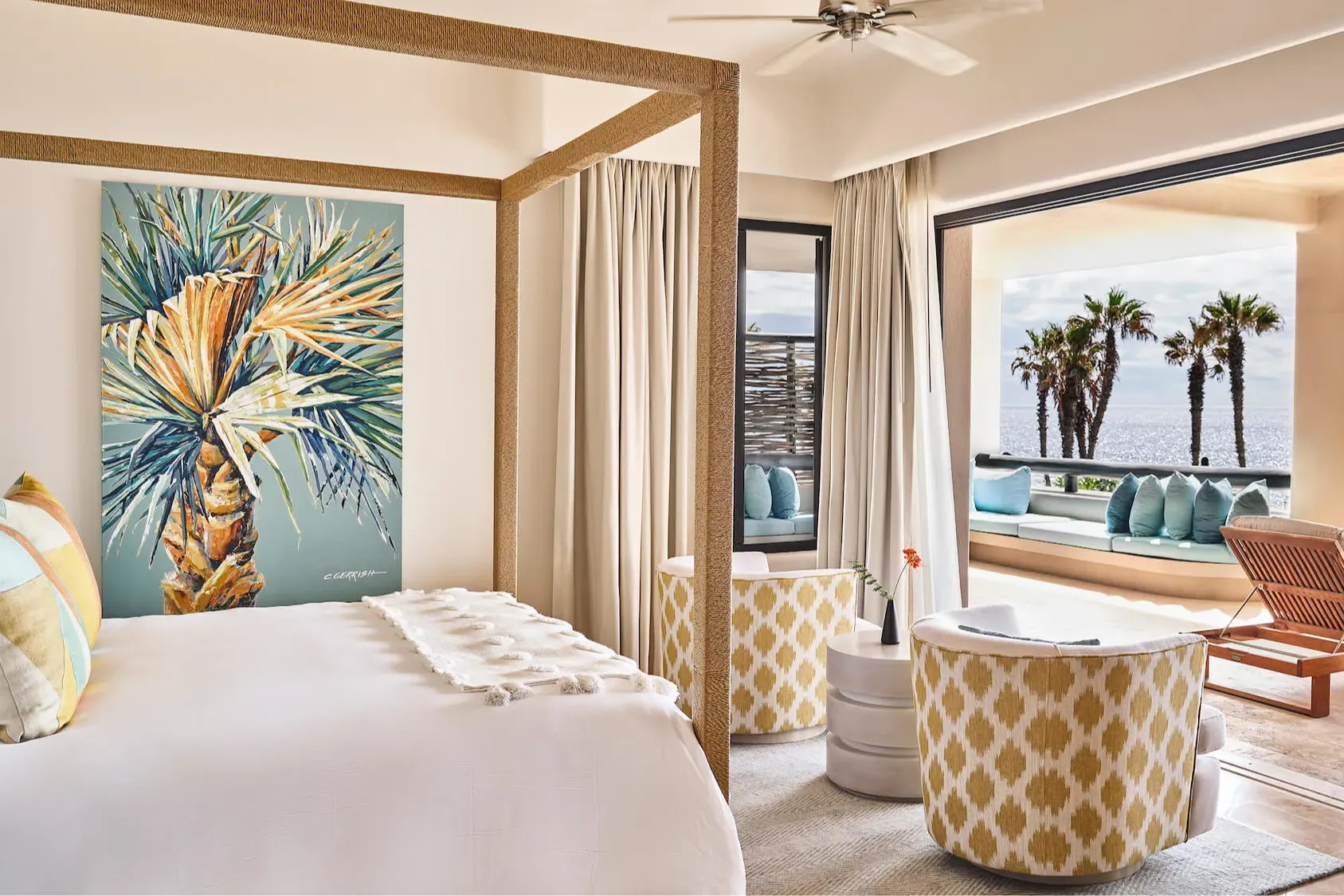
Image courtesy of Crosby Street Hotel
The best part about a more mindful mode of travel is that it often elicits the most memorable experiences. A sustainable trip is a win for both the traveler and our world. As travelers, when we travel mindfully, we can have a positive impact on the destination we visit: we can do so by supporting hotels and experiences that prioritize sustainability initiatives.
When people think of sustainable travel, eco-resorts and volunteer trips often come to mind. And although these modes of travel can be rewarding, they’re just a subset of sustainable tourism (a type of travel that can be applied much more broadly). In fact, you can incorporate a sustainable ethos into any destination, travel style or budget. At its core, sustainable travel is all about traveling in a way that protects our planet and supports local communities.
Below is a sampling of locations (some of which might surprise you) and experiences to inspire you to explore mindfully. For each destination, there are two properties: one that’s more boutique and one from a larger hotel chain. The selection is curated in a way to showcase that whether you love well-established brands or under-the-radar stays, there are sustainable hotel offerings for all travelers. Plus, you’ll find a few sustainable travel tips to keep in mind before, during and after your trip.
This list is intended to act as a springboard and inspiration for what’s possible. Connect with Fora, and our advisors will create a curated, conscious itinerary specific to you and your preferences.
City: New York
If you know where to go, even cities can be sustainable. In fact, more infrastructure and resources often allow for the implementation of more sustainable initiatives. In New York, eco-conscious living is top of mind for many, and numerous restaurants proudly walk the farm-to-table walk.

Image courtesy of 1 Hotel Brooklyn Bridge
What to do & where to eat in New York
WeVenture is an excellent tour operator that offers local and immersive urban exploration. Some top picks include the Tenements, Tales and Tastes Tour, which takes you on a journey to learn about the city’s immigrant history through food. Another great pick is the Broadway Night Out tour (proof that even a Times Square experience can be done in a sustainable way). All of their tours are walking tours, which reduces your carbon footprint, and all involve patronizing local businesses. You’ll also be part of a small group (which gives you a more intimate experience, plus it creates less crowd pollution for locals).
Rooftop Reds, on the roof of the Brooklyn Navy Yard, sustainably produces its own wine, grown on its eponymous rooftop vineyard (yes, really) or on its plot in New York’s Finger Lakes region. The East Village’s Hearth is a neighborhood gem that sources everything locally. All animals are grass-fed and pasture-raised, the restaurant’s biodynamic wine selection is vast and the use of seed oils is eschewed (extra virgin olive oil and grass-fed butter reign). Additional well-sourced nourishment can be enjoyed at The WELL Kitchen & Table and Lighthouse BK, whose composting game is strong. Also don’t miss the legendary Union Square Greenmarket (don’t miss Andrew’s Honey, an urban beekeeper who harvests honey from the city’s rooftops).
Sustainable hotel picks in New York
Sustainable luxury is the name of the game at 1 Hotel Brooklyn Bridge, which boasts views of the Manhattan skyline. It’s worth noting that a stay in Brooklyn is inherently a more sustainable travel decision. This is because the majority of NYC tourists opt to stay in Manhattan, but venturing out to Brooklyn helps disperse tourism dollars more widely. 1 Hotel Brooklyn Bridge is impressively energy efficient (and LEED-certified, no less). Much of it was built using reclaimed materials. Single-use plastics are nowhere to be found, and the bedrooms are outfitted with organic mattresses and nontoxic linens. For an option on the other side of the East River, check out 1 Hotel Central Park. Additionally, 1 Hotels’ neighborhood guides highlight surrounding sustainable businesses and community green spaces, allowing travelers to live like mindful locals.
Firmdale’s Crosby Street Hotel, in Manhattan's SoHo neighborhood, is another notable option. The hotel was LEED certified back in the early 2000s, recognized for its locally sourced building materials and mindful energy and water production systems. All Firmdale properties are big on natural light, too; their liberal use of floor-to-ceiling windows is perhaps one of the chicest way to conserve light energy. Even better, Kit often collaborates with local artists and designers — both household names and yet-to-be-discovered talents — to add further personality to her hotels.
Fora Perks at 1 Hotel Brooklyn Bridge:
$100 food / beverage credit, $25 daily breakfast credit, an upgrade & extended check-in/out whenever possible.
Fora Perks at The Crosby Street Hotel:
A welcome amenity, breakfast daily, an upgrade & extended check-in/out whenever possible.
Sustainable travel tips for NYC
Do as the locals do, and take local transport whenever possible. The subway is surprisingly seamless and, more often than not, you can walk (everything is closer than you think). Get off-the-beaten-path and combat overtourism by visiting outer boroughs. Visiting these less-touristy locales will also help spread tourism dollars across a wider, more diverse selection of businesses. Also, support BIPOC and typically underrepresented businesses. Black-Owned Brooklyn is a great resource and provides a directory of Black-owned businesses while also highlighting impactful community stories. In Chinatown, you’ll find Yu & Me Books, the first bookstore owned by a female Asian-American in New York City. The book collection spotlights immigrant and diverse stories.
Mountains: Vail
Vail is a paragon in the sustainability space. It’s the first mountain resort to be certified sustainable by Green Destinations, a GTSC-certified organization and sustainability authority. It’s also the first certified sustainable destination in the US.
The town has its own Environmental Sustainability Department dedicated to implementing environmentally conscious initiatives (on issues ranging from climate change to wildlife protection) and educating the public about such endeavors.

Image courtesy of Four Seasons Resort and Residences Vail
What to do & where to eat in Vail
The Vail Nature Center is home to a slew of idyllic hiking trails, and the Walking Mountains Science Center hosts a variety of free outdoor activities like snowshoeing experiences, recycling tours, guest speaker series and more.
On Sundays from June to October, support local farmers and artisans at the Vail Farmers’ Market & Art Show. Head to Sweet Basil, a Vail institution that actively supports its community, for a locally sourced, seasonal menu. The sleek bistro Slope Room also champions local ingredients, plus thoughtfully raised animal proteins from local farmers and ranchers.
Sustainable hotel picks in Vail
At Sonnenalp Hotel, a European-style stay in Vail Village, the staff actively participate in green activities like regular trail maintenance and river clean-up. The hotel also financially supports local conservation projects. Reusable containers are found in their spa, and paperless systems abound. Plus, Sonnenalp recycles all their corks and plans to start composting.
Four Seasons Resort and Residences Vail is also committed to keeping Vail green. The hotel offers electric vehicles and charging stations for guests to use. Rooms are outfitted with energy-saving electricity controls and water-saving measures. (Four Seasons is also very conscious of how water is utilized in their landscaping.) They source their food locally, minimize food waste and offer a range of activities meant to immerse guests in the natural and cultural heritages of the surrounding area. Plus, they participate in numerous local, charitable initiatives throughout the year.
Fora Perks at Sonnenalp Hotel:
$100 hotel / resort credit, breakfast daily, an upgrade & extended check-in/out whenever possible.
Fora Perks at Four Seasons Resort and Residences Vail
When you book Four Seasons with Fora, you’ll enjoy exclusive Four Seasons Preferred Partner amenities. Your advisor will be pleased to give you more details.
Sustainable travel tips for Vail
Spend mindfully — many fantastic artists live in Vail, and you can support their work by purchasing directly from them. When hiking, stay on the trails. Stick to photos, rather than taking objects (rocks, plants) from nature. (Photos make the best souvenirs, anyway). For getting around, take the ride share (it’s free).
Beach: Cabo
Cabo San Lucas, a perennially popular resort town on Mexico’s Baja Peninsula, may not exactly scream sustainability at first glance. But a couple notable places are bringing environmentally and socially conscious practices to the beach destination.

Image courtesy of Esperanza
What to do & where to eat in Cabo
Flora Farms is a sprawling organic farm and restaurant that also includes an onsite bar, spa, market and animal rescue program. Acre is another farm-to-table haunt (and also a bona-fide farm). Organic gardens surround the spunky Outpost and populate its diverse range of offerings, from smoothies to chilaquiles. The fine-dining, oceanfront gem Sunset Monalisa meticulously selects its ingredients, partners with local farms, uses renewable energy resources and actively supports the Los Cabos Children’s Foundation, a local non-profit focused on children’s health.
Also check out San José del Cabo Mercado Orgánico, an organic farmers’ market that takes place every Saturday. The hip Coffee Lab sources its beans from sustainable family farms, and there is always a fun social event going on.
Sustainable hotel picks in Cabo
Auberge’s Esperanza, an intimate hideaway located between two coves and home to a coveted private beach, checks a lot of boxes when it comes to sustainability. The resort partners with local fishing collectives and farms to source produce and ingredients for their onsite restaurants, from the romantic seaside Cocina del Mar to the casual poolside La Terraza Americana. Additionally, Esperanza, in collaboration with its sister property Chileno Bay, has partnered with the Green Scholarship Program. Each year, the hotels sponsor the first year of university for two female students studying marine biology or tourism. The scholarship also covers English classes and transportation.
Another sustainably minded option is Viceroy Los Cabos, a sleek resort with over 180 rooms. The decor is contemporary and stylishly minimalist, courtesy of renowned Mexican architect Miguel Ángel Aragonés. The resort sources its water from the ocean, which it then runs through a desalination plant, reducing water waste. Its water fixtures are also low-flow, which further helps conserve the resource. Housekeeping uses nontoxic cleaning ingredients, and welcome beverage containers and straws are made from biodegradable corn and avocado products.
Fora Perks at Esperanza:
$100 hotel / resort credit, breakfast daily for two, an upgrade & extended check-in/out whenever possible.
Fora Perks at Viceroy Los Cabos:
A welcome amenity, breakfast daily for two, an upgrade & late check-out whenever possible.
Sustainable travel tips for Cabo
Use reef-safe sunscreen; this protects native marine and wildlife from harmful chemicals. Plus it’s typically better for your skin.
Choose wildlife encounters that prioritize seeing animals in their natural environment and that allow for serendipitous experiences (it’s more special that way, too). Avoid any company that guarantees a wildlife sighting; if they do, it likely means that the encounter will be posed. Also, experiences that employ scientists are often the most eco-friendly, and you’ll learn more from the experience as well. (See our guide to ethical wildlife travel.)
Cabo is a great destination for relaxation, but there are plenty of cultural offerings that make it more than just a fly and flop destination. Do a cultural tour. Better yet, find one that is Indigenous-owned. One intriguing option is a tour of the dwellings and rock art of the Pericúes, the region’s Indigenous inhabitants.
Cruise: HX

Image courtesy of HX
Hurtigruten, which was recently rebranded as HX, is a pioneer in the eco-friendly cruise space. They were the first cruiseline to ban heavy fuel oil across their fleet. In 2020, they launched the first battery-powered hybrid-electric ships. HX is also on track to be carbon neutral by 2040, and net zero emissions before 2050.
The entire company abides by a strict leave-no-trace ethos. You won’t find single-use plastics aboard their ships, and HX as a whole supports numerous Green Tech initiatives around the world. Hurtigruten Foundation actively funds projects with three goals in mind: to protect endangered species, to combat marine pollution and plastic waste and to support local communities. In fact, HX invests considerably more into its local initiatives than most cruise ships. When you go on an offshore tour while on an HX cruise, your tourism dollars will support the local companies you visit (this is unfortunately rare throughout the rest of the cruise industry). The company serves as an essential importer and exporter of goods, allowing small businesses to thrive. For many local businesses, HX is their biggest customer.
Ready to travel? Connect with Fora to plan and book your conscious getaway today.
